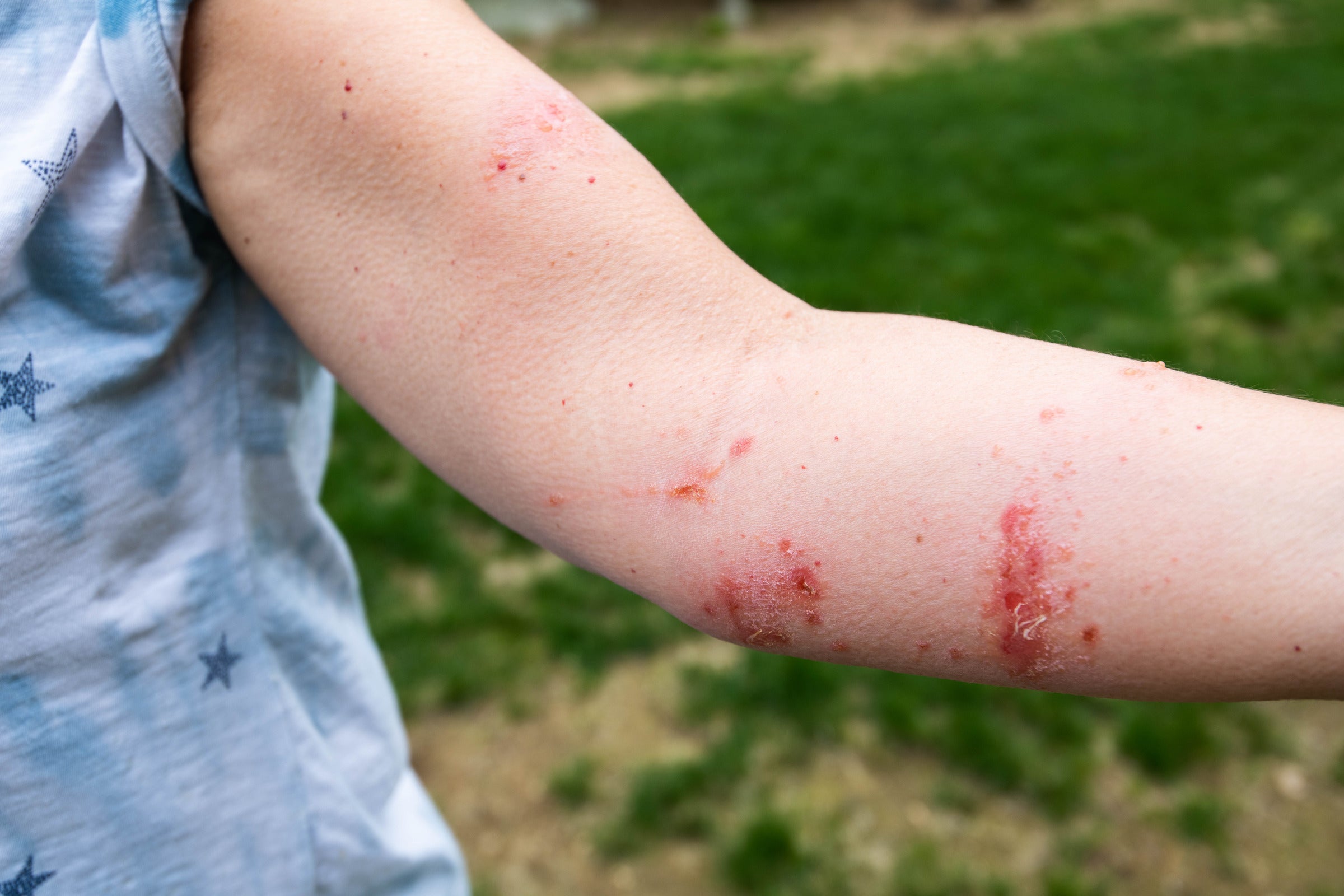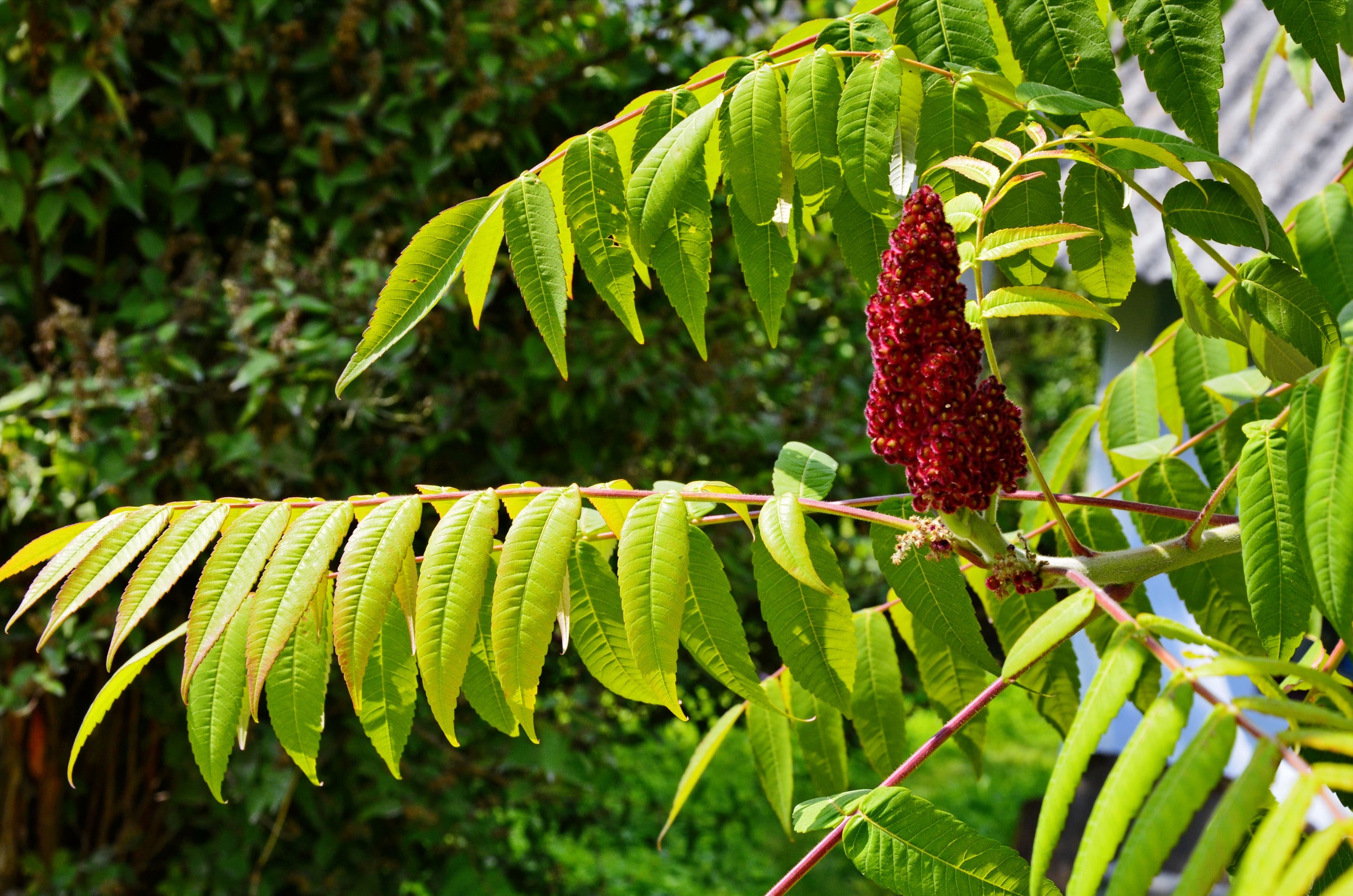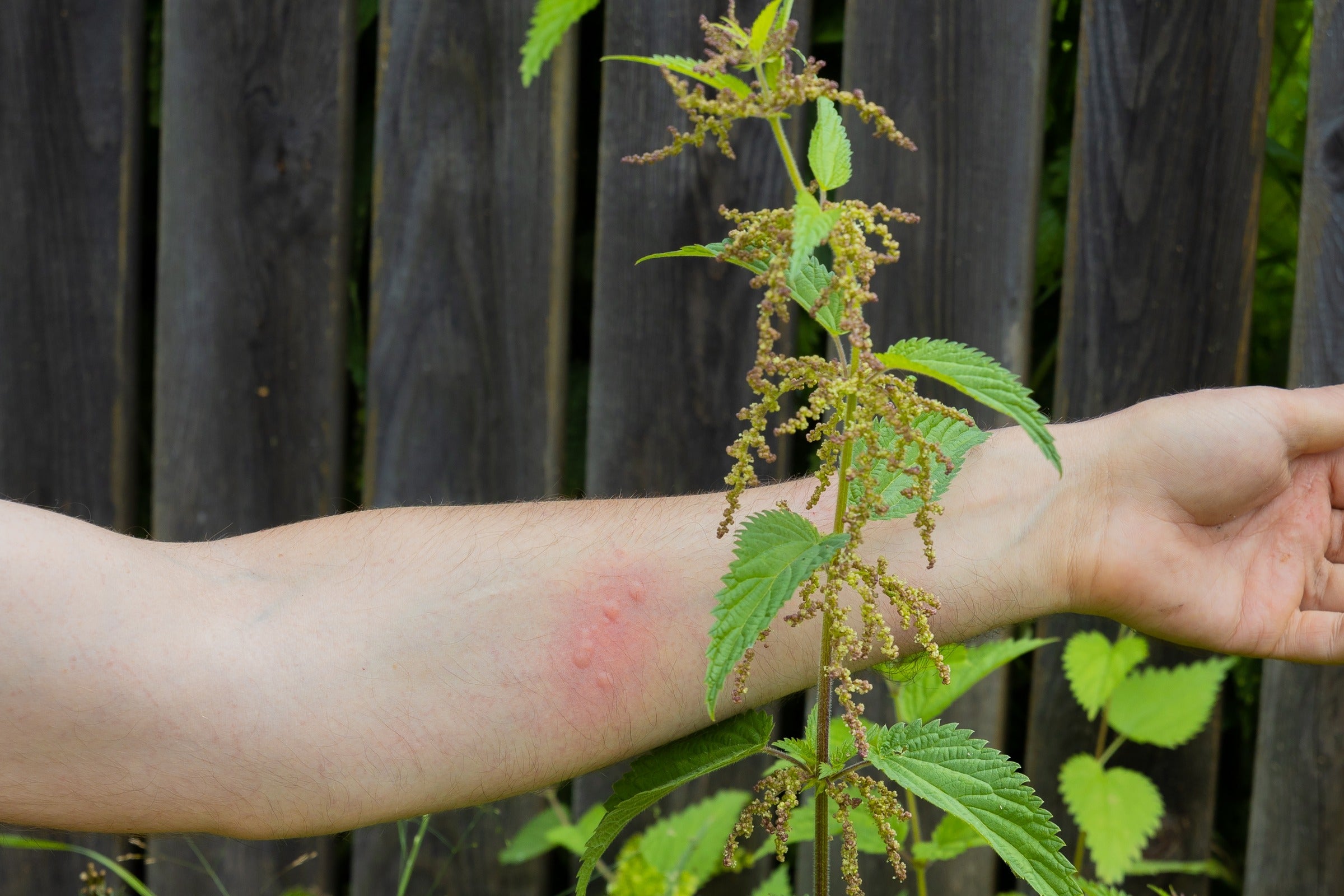Gardening, hiking, or camping in the wilderness may lead us to encounter various plants. While many plants are harmless, some can trigger unpleasant skin responses. These allergic reactions can vary from minor irritation to severe blistering, causing medical intervention.
Plants like poison ivy, oak, wood nettle, and sumac provoke allergic skin responses. Typically, the rash comprises itchy bumps or blisters and an itchy, red rash.
This blog post will explore the common culprits and plants responsible for causing skin rashes and blisters. Identifying and preventing these reactions will be discussed.
Plants That Cause Rashes and Blisters: 5 Common Culprits

Itchy skin rashes are caused by poison ivy, a poisonous plant. Other rash-inducing toxic plants include poison oak and poison sumac. These plants produce an oily sap that contains urushiol (pronounced yer-OO-shee-all), which causes an irritating, itchy allergic reaction.
Poison Ivy:
Poison ivy (Toxicodendron radicans) is a plant notorious for causing an allergic skin reaction known as contact dermatitis. Here are some essential points about poison ivy:
Urushiol and Allergic Reactions
- There is a risk of developing an itchy rash known as contact dermatitis. Blisters may form and can cause severe discomfort.
- An oily resin found in poison ivy leaves, stems, and roots triggers an allergic response.
- Symptoms usually appear 8–48 hours after exposure and can last for weeks.
Identifying Poison Ivy
- The plant can be found in wooded areas, along trails, and even in urban settings.
- This plant usually has three leaflets per leaf group, with the middle leaflet having a longer stem.
- The leaves are glossy and can be red, green, or yellow, depending on the season.
Common symptoms include:
- Redness
- Itching
- Swelling
- Formation of blisters
- Difficulty breathing if urushiol is inhaled (such as from burning poison ivy).

Poison Oak:
Poison oak (Toxicodendron diversilobum) is a plant species found in North America, Taiwan, Japan, and Russia. It belongs to the genus Toxicodendron, including poison ivy and poison sumac. Here are some important points about poison oak:
Appearance and Characteristics
- Poison oak leaves comprise three leaflets, which is why they’re often referred to as “leaves of three, let it be.”
- The leaf margins may be wavy and occasionally have lobes.
- It can survive extreme climatic conditions.
- Approximately 85% of people who come into contact with poison oak develop an allergic reaction.
- The plant should never be burned, as the resulting smoke can cause allergic reactions in the lungs when inhaled.
Urushiol and Allergic Reactions
- All parts of the poisonous plant, including the leaves, stems, and roots, contain urushiol, an irritating oily sap.
- Urushiol can be ingested directly or indirectly by touching objects (such as gardening tools or camping equipment) that have come in contact with the plant.
- Inhaled urushiol can cause a serious allergic reaction affecting the nasal passages, throat, and lungs if the plants are burned.
Signs of Allergic Reaction to Poison Oak
- Symptoms usually appear one to six days after exposure.
- Difficulty breathing or swallowing.
- Rash around the eyes, mouth, or genitals.
- Facial swelling, especially around the eyes.
- Severe itching that worsens.
- Rashes on most of your body.
- Development of a fever (besides primary poison oak symptoms).
Poison Sumac:

Poison sumac (Toxicodendron vernix) is a plant similar to poison ivy and oak. When you come into contact with its oil, urushiol, it can cause an allergic skin reaction. Here are some critical points about poison sumac.
Identifying Poison Sumac
- It is found in swamps, wetlands, pinewoods, and hardwood forests.
- Abundant along the Mississippi River and swampy areas of the Southeast.

Characteristics
- Reddish stems.
- Leaves with 7–13 leaflets arranged in pairs, with a single leaflet at the end.
- Elongated leaflets with a smooth texture, smooth edges, and a V-shaped point.
- Bright orange leaves in early spring turn dark green and glossy and then turn red-orange in autumn.
- Flowers in clusters, yellow-green.
- Loosely packed ivory-white to gray fruits.
Symptoms of Poison Sumac Rash
- It can take up to 48 hours after exposure for the rash to appear and last for several weeks.
- Itchiness. Redness. Swelling.
- Burning sensation on the skin.
- Formation of watery blisters.
- Oils from the rash can spread if they remain on the skin, clothing, or shoes.
- When you scratch your skin, you can develop an infection characterized by redness, pain, pus, and oozing from the blisters.
- When the plant oil is inhaled (as when it is burned), it can cause dangerous lung irritation, potentially leading to severe breathing difficulties and coughing.
Stinging Nettle:

Stinging nettle (Urtica dioica) is a plant that causes discomfort on human skin after contact with it. Let’s explore its symptoms, identification, causes, and characteristics:
Symptoms of Stinging Nettle Rash
- Contact with stinging nettles leads to a painful inflammation.
- The affected area may develop raised bumps.
- The skin around the rash may appear lighter.
- Pain and itching are common symptoms in the sting area.
Identification
- Stinging nettles have fine hair and contain chemicals that irritate the skin.
- These chemicals include formic acid, which causes a painful rash.
- The leaves and stems of stinging nettles have bulbous tips that break off when touched, revealing needle-like tubes that pierce the skin.
Characteristics
- Stinging nettle rash usually resolves within a few hours.
- A severe allergic reaction may occur in severe cases, leading to symptoms like difficulty breathing, swelling, and nausea.

Giant Hogweed:
Giant Hogweed (Heracleum mantegazzianum) is a highly invasive plant that poses significant risks to human health. Let’s delve into its symptoms, identification, and key characteristics:
Symptoms of Giant Hogweed Exposure:
- Contact with giant hogweed sap can cause skin irritation.
- The affected skin may become red and inflamed.
- Painful blisters can develop, often with dark pigmentation.
- The fluid can cause burns on the skin.
- Long-term exposure may lead to scarring.
- Dermatitis: This severe skin reaction worsens with sun exposure.
- The affected area may remain sensitive to UV light for months.
Identification
- Giant hogweed lives up to its name, growing an average of 12 to 15 feet tall.
- Its thick, hollow stem measures about 2 to 4 inches across and is red-purple. Noticeable bristles cover the stem.
- Leaves can be as large as five feet wide, with deep, jagged incisions along the edges.
- In spring, clusters of small white flowers form broad, umbrella-like shapes at the top of the plant. The entire inflorescence can be up to 2.5 feet across.
- Rounded seed pods develop in the same region after flowering. These persist through the fall.
Origins and Invasiveness
- The giant hogweed grows in the Caucasus region, including countries like Georgia, Armenia, and Azerbaijan.
- Initially introduced for decorative purposes, it has become a problematic invasive species in Europe, Great Britain, Canada, and the U.S.
Safety Measures Against Harmful Plants: 4 Prevention

For navigating the natural world, knowledge is your best defense. Awareness of plants that can cause rashes and blisters is essential, but understanding how to protect yourself from them is equally important. Here are some strategies for avoiding these harmful plants and what to do if you do.
Tips for Avoiding Harmful Plants
Learn to identify harmful plants: Familiarize yourself with the appearance of plants like poison ivy, poison oak, and stinging nettles. They each have unique features that make them identifiable.
- Stay on the trail: When hiking or exploring, avoid the clear paths where harmful plants are less likely to grow.
- Be cautious in unknown areas: If you're in an area you're not familiar with, be extra careful. Harmful plants often grow in areas of disturbed soil, such as along roadsides or construction sites.
Protective Clothing and Gear
- Long sleeves and pants: Keeping your skin covered can help protect against exposure to harmful plants.
- Use gardening gloves: Always wear gloves when working in a garden or yard. This can prevent direct contact with harmful plants.
- Consider protective creams: Pre-exposure creams can create a barrier on your skin and reduce the risk of a rash.
Safe Gardening Practices
Know your garden: Be aware of what's growing. If you spot a harmful plant, remove it safely or consider hiring a professional.
- Use the right tools: Use a long-handled tool for removing harmful plants to keep them at a safe distance.
- Dispose of harmful plants properly: Don't burn plants that cause blisters and rashes. The smoke can carry the plant's oils and cause lung irritation.

Immediate Steps to Take Post-Exposure
- Wash your skin: If you come into contact with a harmful plant, wash the area thoroughly with soap and cool water as soon as possible.
- Clean your clothing and gear: The oil from these plants can stick to clothing, shoes, and tools. Clean everything that may have come into contact with the plant.
- Seek medical attention if necessary: If a severe rash develops or inflammation affects the eyes or mouth, seek medical help immediately.
Conclusion
With its awe-inspiring beauty and intricate ecosystems, nature offers endless wonders to explore. Yet, amidst its allure lie potential hazards as plants that can induce rashes and blisters upon contact.
By cultivating knowledge about these plants, delving into the scientific mechanisms, triggering such reactions, and implementing suitable safety precautions, we can navigate the great outdoors with confidence and comfort.
Emphasizing awareness and prevention is crucial to protect ourselves from natural threats. Staying informed, taking proactive safety measures, and exploring the natural world cautiously enrich our experiences.
















